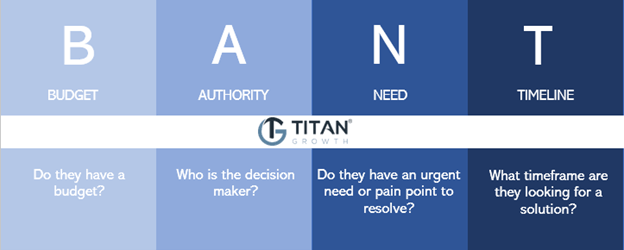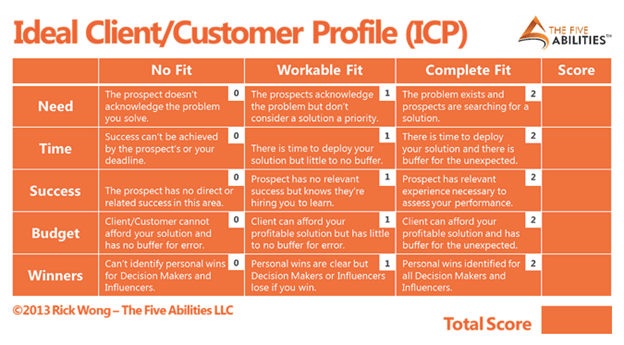A campaign is only as good as its targeting, and targeting is only as good as your Ideal Customer Profile. Do you know your ICP? Here’s how to find it.
Eliminate Outbound Guesswork with Ideal Customer Profiles
Remember when we looked at the difference between cold email prospecting and marketing emails?
We’ll save you the time of reading that post.
(Though you might want to check it out just so you can get to know Ray Tomlinson better. Yeah, that’s right, the Ray Tomlinson. We’ll give you a hint – he invented email.)

In short, the difference between cold email prospecting and marketing emails boils down to one being outbound (cold emails) and the other inbound (marketing emails).
That’s pretty much it.
Yet, that one, simple directional switch makes a world of difference in business communication.
It’s not uncommon for companies to assume outbound marketing costs more than inbound marketing (more time, more money, and more resources).
And that may be true in some regard; however, outbound marketing can also be cost-effective (not to mention a significant revenue stream) too.
So let the other companies slander outbound marketing’s good name. Because all that besmirching lets you buck popular opinion to your benefit.

Which is one of the reasons why we’re such big fans of email prospecting.
Some people think cold email prospecting is guesswork. Nothing more than a tactic to bother random unvetted contacts with impersonal, mass messaging in hopes that something will stick.
And, sure, that’s the typical approach.
But when done right, cold email prospecting is a pearly white hat tactic to engage pre-vetted contacts with relatable, personalized messaging that brings value, insight, and joy to all.
What sets these two types of cold emailing apart is the type of contact they target.
Which brings us to today’s topic: Targeting the right audience.
Or, as we marketers like to call it, targeting your Ideal Customer Profile.
Using Ideal Customer Profiles to Target the Right People
Effective email prospecting (cold, warm, or otherwise) depends on two things to survive and thrive:
- Valid email addresses
- Great messaging
The second is only as good as the first. Because, as any experienced digital marketer knows, email outreach lives and dies by its contact list.
Which is why it’s crucial that we use valid email addresses in our campaigns.
Emphasis on the word valid.
To deem an email address is valid, it must:
- Be legit (e.g., won’t bounce)
- Belong to prospects most likely to buy what you’re selling (aka SQLs)
Every company has different criteria for defining an SQL (sales qualified lead). Sometimes different departments will even have different definitions. So determining validity can get tricky for your outreach, and not doing so correctly, or at all, can spell disaster.
So before any marketing campaign can succeed, we first need to comprehensively identify the criteria used to measure SQLs and validate email addresses.
That’s where an ideal customer profile comes in.
Which begs the question…
What is an Ideal Customer Profile?
An ideal customer profile (also known as your “ideal customer persona” or ICP, for short) defines your most valuable customers. It is a clear, standard, objective definition of who your product’s preeminent buyers and users are. The ones that are a perfect fit for your solution and would benefit the most from what you offer.
In other words, your ICP is your ideal buyer.
They are your sales qualified target market.
In B2B, this means a target company and its decision-makers.
Overall, an ICP is structured around a combination of qualitative and quantitative characteristics, all of which are data-driven.
This data constitutes the firmographics of your ICP.
That’s right: firmographics.
As in, demographics for firms.

Firmographics are to businesses what regular demographics are to people.
They are a set of characteristics used to aggregate individual firms (or organizations) into meaningful segments, forming a profile of your ideal customers that you can easily cross-reference when building out your contact lists.
To put it in more attractive terms: Identifying your ICP helps you target customers possessing the highest purchase intent, greatest retention rate, and strongest affinity for your brand.
How to Create Your Ideal Customer Profile Using Firmographics
An ideal customer profile can be collated by looking at:
- Your previous and current “best” customers
- Customers of competitors
- Engaged visitors on your site
- Industry trends
The latter three are typically reserved for startups and early-stage businesses that haven’t yet built up a healthy customer list. (If this is you, in the next section, we’ll share some tools to aid in your ICP quest.)
For the companies who have been around a while, your “best” customers will be your greatest resource. They are a compilation of closed-won opportunities (i.e., sales qualified leads which converted into customers).
We say “best” in quotations because this won’t be the same for everyone.
Is the best customer one who makes a single purchase or one who makes ten purchases? Is the best customer one who buys in one vertical or one that buys in all your verticals?
There’s no right answer here.
It is something your team needs to decide based on your business model and customer data collectively.
Just remember, this isn’t a good customer or even a great customer.
It is your BEST customer.
As in:

Once you determine who your best customer is, you can create a profile composed of firmographic attributes.
We’re going to use “firmographics” as an umbrella term that also includes employee demographics and business technographics. While these are technically separate segmentation methods, in this context, they all help to create a full profile of your ideal customer covering every level of your customer’s business.
These levels include:
- Company-Level Data
- Employee-Level Data
- Technology-Level Data
Company Firmographics
First, you want to look at your best customer by understanding their company as a whole.
This is what traditional firmographics look like.
Company-level data includes:
- Industry – What products or services does this customer provide? How does what you offer enhance their business?
- Location – Where is this customer located? A specific type of city or region? Are they international? Do they have one location or multiple? Take into consideration the weather, tourist traffic, local demographics, and other factors specific to that location.
- Company Structure – Are they a startup, small business, or larger, well-established company?
- Employee Size – How many employees do they currently have? Are they growing? Downsizing? Segment your best customers according to their number of employees.
- Company Revenue – What is their level of income? Has their revenue increased or decreased? Segment your best customers accordingly.
Employee Firmographics
Next, you want to understand the decision-makers and influencers who will make the purchase happen, also known as buyer personas. These are the people you will be communicating with directly.
Depending on the company structure and size, there could be one or several decision-makers. In some cases, you may only be able to gain access to those decision-makers by first communicating with influencers, like supervisors or lower-level colleagues.
By looking at your best decision-makers’ demographics and those that influence them, you can better prepare your marketing strategy.
This employee-level data includes:
- Gender
- Age
- Race
- Position Type
- C Level
- VP
- Manager
- Non-Manager
- Job Details – What are their responsibilities? What does their day-to-day look like? What time of the day, month, or year are they most busy? Least busy?
- Pain Points – Which parts of their job are the most challenging? Which parts would they change if they could? Are they a cash-strapped startup owner looking for more money? A tech analyst in search of more valuable data? How can your offering help?
- Lifestage – What stage of life are they in? Are they a recent grad? Are they single? Married? A parent of young children? A parent of teens? Empty-nester? New hire or just promoted?
- Interests – What do they enjoy most, career or otherwise? Do they like surfing? Are they an animal lover? A health nut? Are they an early adopter tech geek?
- Industry Sources – Where do they get information about their business and role? What blogs and industry reports do they read? What sites do they visit? Who do they follow on social media?
- Buying Process – How long does it take them to make a decision? How much nurturing do they need throughout the process?
- Most Common Questions & Objections – What are their biggest concerns? What are the best answers you can provide?
- LinkedIn Profile

Technology Firmographics
Finally, you want to understand what resources they are using and how they relate to what you offer.
These are also known as technographics.
This tech-level data includes:
- Website URL
- Website Structure – What kind of CMS do they use? Is it a custom backend or pre-built, like WordPress?
- CRM – Do they use customer relationship management software?
- Analytics – Where are they getting their business insight from? Do they have a dedicated statistical team? Do they use third-party tools, like Google Analytics, Mixpanel, Hubspot, SEMRush, etc.
- Automation – How automated is their marketing? What automation tools are they using?
- Tech Spend – How much do they spend on tech, software, and services?
- Marketing Spend – How much are they spending on marketing platforms such as Google Ads, LinkedIn Ads, and Facebook Ads?
- Other Technology – Are they using any industry or company-specific tech?
The end result of all this data-gathering should look something like this example from HubSpot.

As you can see, a lot goes into forming the firmographics of your best customer.
Even still, this is not an exhaustive list.
There are countless different criteria for segmenting your best customers using firmographics. Above are some of the most common.
A more simplified but also helpful method can be outlined using a BANT framework to ascertain a snapshot of their budget, authority, needs, and timing.

Similarly, the following framework created by Rick Wong, author of Winning Lifelong Customers, can help segment:

But those are only for quick reference.
Ideally, the more data you have, the better when creating an ideal customer profile.
Though getting that data is easier said than done.
Tools to Help Find Your Ideal Customer Profile
As we saw above, ascertaining ICP data requires answering a lot of questions, some of which contain info that is not so easy to find.
To make it easier, let’s take a look at some helpful resources.
If you want to identify customers of competitors, try tools like LinkedIn Sales Navigator and NerdyData.
If you want to identify engaged visitors on your site, try tools like LeadFeeder.
If you want to identify industry trends, try tools like Google Alerts and Google Trends.

If you want to identify your best customers, some helpful data-collection methods include:
- Digital analytics tools
- Existing customer surveys and focus groups
- Your CRM database
- Interviewing customer service and sales team members
As for online analytics tools, here are several that can provide valuable insight into companies and their employees:
Remember, sometimes the best way to find your best customer is also to know who your worst is. So be sure not just to analyze your current top-performers, but also search for your poor-performing customers so you can highlight their shared attributes as ones that shouldn’t go into your ICP.
Finally, it’s also important to note that not every one of your best customers shares the same attributes. So the task becomes segmenting your customers according to shared attributes and seeing which segment comprises the majority of your best customers.
The sweet spot will be your Ideal Customer Profile.
An Example of an Ideal Customer Profile Definition
Ideally, your Ideal Customer Profile will be very detailed, composed of a ton of attributes. Enough to paint an incredibly clear picture and pinpoint your target audience with exactitude.
However, it’s also useful when all is said and compiled to come up with a short and straightforward definition, summarizing all that data. Or to select the main attributes that comprise an ideal customer.
This ICP definition will make it easier for your entire team, across different departments, to get on the same page quickly.
It’s okay for a business to have multiple ICPs. In fact, it will likely be a necessity if you offer multiple, uniquely distinct services or products.
Next Steps: From ICP to ABM
We’ve come a long way since the start of this post.
Remember, in the beginning, the two things we said all effective email outreach needs to survive and thrive?
They were:
- Valid email addresses
- Great messaging
And remember how we defined a valid email address as being one that is both legit and belonging to your SQLs? Well, we just took care of the latter —- finding your target audience.
That’s no small thing.
Finding your target audience is probably the biggest and best step in developing a winning marketing strategy.
So you are now well-equipped to build a contact list, stock full of legit email addresses.
All you need to do is use your ICP to build a high-converting contact list from scratch.
But that’s not all you get from finding your ICP!
You’re also in a prime position to succeed at the second requirement above — great messaging.
That’s because an ICP is a necessity for account-based marketing (ABM). ABM puts the customer at the center of your marketing efforts. It is the end-all, be-all of strategies – omnichannel marketing at its best.
But like we said, we’ve just come a long way and covered a lot of important information.

Reading what to do is one thing.
Doing it is something entirely different.
So if you want some help defining your ICP and implementing it for some account-based marketing with your brand, we’re here to help.
Just get in touch, buckle up, and we’ll buck trends, together.



